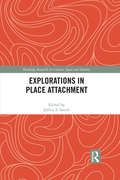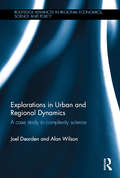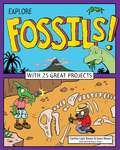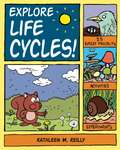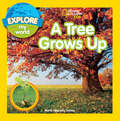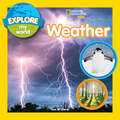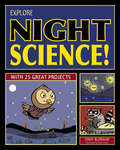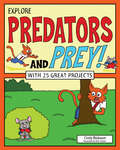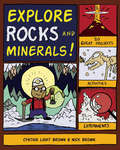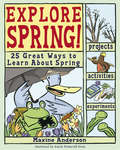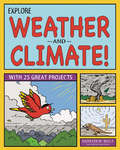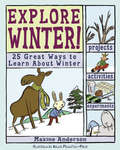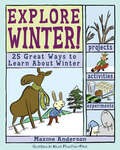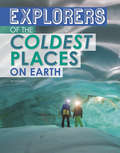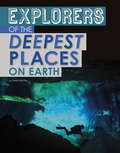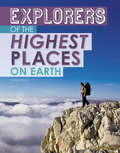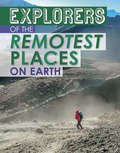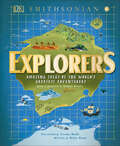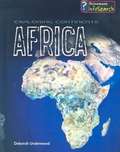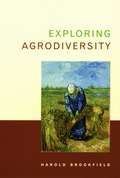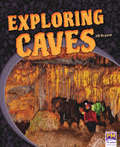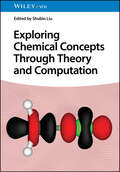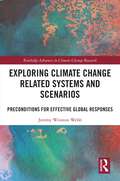- Table View
- List View
Explorations in Place Attachment (Routledge Research in Culture, Space and Identity)
by Jeffrey S SmithThe book explores the unique contribution that geographers make to the concept of place attachment, and related ideas of place identity and sense of place. It presents six types of places to which people become attached and provides a global range of empirical case studies to illustrate the theoretical foundations. The book reveals that the types of places to which people bond are not discrete. Rather, a holistic approach, one that seeks to understand the interactive and reinforcing qualities between people and places, is most effective in advancing our understanding of place attachment.
Explorations in Urban and Regional Dynamics: A case study in complexity science (Routledge Advances in Regional Economics, Science and Policy)
by Alan Wilson Joel DeardenThe task of modelling the evolution of cities – the dynamics – is one of the major challenges of the social sciences. This book presents mathematical and computer models of urban and regional dynamics and shows how advances in computer visualisation provide new insights. Models of non-linear systems in general have three characteristics: multiple equilibria, ‘path dependence’ over time and phase transitions – that is, abrupt change at critical parameter values. These phenomena all exhibit themselves in reality, and it is an ongoing task to match model-based analysis with real phenomena. There are three key features of cities and regions to be represented in models: activities at a location – residence, health, education, work and shopping; flows between locations – spatial interaction; and the structures that carry these activities – buildings, transport and communications networks. Spatial interaction and many elements of activities’ location can be modelled by statistical averaging procedures, which are related to Boltzmann’s methods in statistical mechanics. This is while the evolution of structure can be represented in equations that connect to the Lotka-Volterra equations in ecology. Within this broad framework, alternative approaches can be brought to bear. This book uses entropy-maximising versions of spatial interaction models. The authors explore the dynamics in more detail, using advanced visualisation techniques. These ideas have wide potential uses, and the book illustrates this with applications in history and archaeology.
Explore Fossils!
by Cynthia Light Brown Grace BrownIn Explore Fossils! With 25 Great Projects, readers can expand their dinosaur obsessions into learning opportunities that take them beyond Triceratops, Stegosaurus, and even Tyrannosaurus rex to other animals, plants, and microbes that lived long before humans. Explore Fossils! introduces young readers to the history of life on Earth as revealed by fossils. Kids learn how fossils form and about the different types of fossils and the world of long ago--its landscape and the plants and animals that lived then. Scientists use radiometric dating to test fossils to discover when they were made, what organisms made them, what those organisms used for energy, what killed them, and a whole lot of other information. All from rocks! That's a lot of information stored under our feet. Activities include creating plaster fossils, using popcorn to illustrate radiometric dating, and exploring what might have caused mass extinctions by making a lava flow and simulating an asteroid impact. By studying the past, not only do students meet amazing plants and animals, they are also encouraged to consider their own role in geological time to make thoughtful hypotheses about the future.
Explore Life Cycles!
by Kathleen M. Reilly Bryan StoneExplore Life Cycles! takes kids on an amazing journey, where they'll learn about the changes plants and animals experience throughout their lives. Kids ages 6-9 will discover what happens inside those magical cocoons to transform a caterpillar into a butterfly. They'll explore how frogs breathe underwater as tadpoles, then use lungs as an adult. Explore Life Cycles! will examine how plants and animals are born, develop, and live their lives.Activities range from creating edible life cycles of insects to making a mealworm nursery. Using an eye-catching combination of cartoons, fun facts, and exciting projects, Explore Life Cycles! will bring the mysteries of life right into kids' hands.
Explore My World A Tree Grows Up (Explore My World)
by Marfe Ferguson DelanoIn this charming picture book, curious little kids will learn all about how an acorn grows up to be an oak tree. The story includes the stages of growth of a tree throughout the seasons and year. It also introduces the happenings around the tree, from children playing in its shade to squirrels climbing up its trunk and birds nesting in its branches. These engaging Explore My World picture books on subjects kids care about combine simple stories with unforgettable photography. They invite little kids to take their first big steps toward understanding the world around them and are just the thing for parents and kids to curl up with and read aloud.
Explore My World: Weather (Explore My World)
by Lisa M. GerryPacked with colorful photographs of adorable animals braving the elements, this picture book for preschoolers introduces kids to the weather they experience every day, including rain, clouds, sunshine, snow, storms, and more.From snowflakes to raindrops to puddles, from sunny days to cloudy days to blustery days, young readers will be amazed by the wondrous and ever-changing world of weather. These engaging Explore My World picture books, on subjects kids care about, combine simple storytelling with unforgettable photography. They invite little kids to take their first big steps toward understanding the world around them and are just the thing for parents and kids to curl up with and read aloud.
Explore Night Science!
by Bryan Stone Cindy BlobaumExplore Night Science! encourages 6-9 year olds to safely explore and understand what happens around the world when it is dark outside. Readers are led step by step into integrated, active explorations that uncover the science and technology of the natural and physical world that surrounds them. Kids learn about the rod and cone cells found in their eyes as they test their color vision at night, create a chorus mimicking the sounds of nocturnal animals, and make a personal stardome. Sidebars highlight a real kid who discovered a supernova, how Stonehenge is an ancient almanac, and what elephants and moths have in common.Kids will be amazed at the adaptations used by plants and animals to survive and thrive in the dark of night. Whether they live in the country or in the city, kids will learn to use all of their senses to investigate the night.
Explore Predators and Prey!: With 25 Great Projects
by Cindy Blobaum Matt AucoinHunting, hiding, trapping, and tricking are just a few of the strategies used by animals in the wild to ensure they eat enough without being eaten themselves! In Explore Predators and Prey! With 25 Great Projects, readers ages 7 through 10 explore the physical and behavioral adaptations of predators and prey and their impact on the environment.Predators, such as hawks and foxes, have keen eyesight and sharp beaks and teeth to help them catch their prey. Prey, such as mice and rabbits, have large ears to hear danger and can move quickly to escape their enemies. Animal populations are closely integrated with each other and the surrounding environment. A change to one population causes changes to all others. Readers discover how repercussions can affect nature, including humans, and are encouraged to consider their own actions with an eye toward the effect on the environment.In Explore Predators and Prey, kids actively learn about body tools and behavior strategies as they test their own abilities to hunt and hide in a series of science-minded activities. Fun facts and colorful cartoons make learning entertaining and links to online primary sources and videos make the content accessible to all learners.
Explore Rocks and Minerals!
by Cynthia Light Brown Bryan Stone Nick BrownExplore Rocks and Minerals! offers kids ages 6-9 a fascinating introduction to geology. It investigates the geological forces that create and transform rocks, outlining the life cycle of igneous, sedimentary, and metamorphic rocks, and what they can tell us about the earth. It also explores fossils, and how they come to exist and are discovered.Explore Rocks and Minerals! includes 20 hands-on activities to bring learning to life. Kids create their own crystals, sculpt edible models of the planet, and bake volcanic meringue cookies. These easy-to- follow activities require minimal adult supervision and use common household products. By combining an interactive component with jokes, fun facts, and cartoons, Explore Rocks and Minerals! provides a fun, accessible introduction to geology.
Explore Spring!
by Lauri Berkenkamp Alexis Frederick-FrostFrom tracking spring peepers and raising tadpoles to learning about seeds and recording plant growth, Explore Spring! 25 Great Ways to Learn About Spring invites young readers to explore the wonders of spring by becoming scientists in the field. Combining hands-on learning with solid science, trivia, riddles, and terrific illustrations, projects investigate "the reason for the season" and include identifying trees and measuring their growth, recording soil temperature, and observing the forest floor. Bird migration and nest building are covered, and the movement of air and water is studied with experiments in capillary action and in such activities as "Making Parachutes," Making Kites," and "Mapping Air Currents with Bubbles."
Explore Weather and Climate!
by Bryan Stone Kathleen M ReilleyWhat's it like outside? And what are you going to do about it?Every morning, before heading to school or out to play, kids want to know what the weather is going to be like that day. Is it a day for building a snowman, constructing a sandcastle, or planting a garden? Will they be stuck inside because of rain at recess? Or stuck at home because of snow? And what about tomorrow? Explore Weather and Climate! will help kids understand the "how" and "why" behind the "what." They'll learn how wind, sun, and water combine to form the weather we experience every day. They'll find out why the weather gets extreme. Explore Weather and Climate! offers engaging text reinforced with 25 hands on projects that include creating a storm in a bottle, touching the clouds, and eating an edible climate map, resulting in an unforgettable understanding of these forces of nature.
Explore Winter!
by Maxine Anderson Alexis Frederick-FrostYoung readers become scientists in the field when this activity book sends them off to answer the question "Why do we have winter?" with experiments and projects that mix real science with real fun. Combining hands-on learning with trivia, jokes, riddles, and terrific illustrations, chapters start with the "tools" of science-the scientific method and how to keep a science journal-and then investigate the winter constellations, long nights and long shadows, animal tracking in snow, and food-gathering behavior in birds.
Explore Winter!: 25 Great Ways to Learn About Winter
by Maxine Anderson Alexis Frederick-FrostYoung readers become scientists in the field when Explore Winter! sends them off to answer the question "Why do we have winter?" with experiments and projects that mix real science with real fun. Combining hands-on learning with trivia, jokes, riddles, and terrific illustrations, chapters start with the "tools" of science-the scientific method and how to keep a science journal-and then investigate the winter constellations, long nights and long shadows, animal tracking in snow, and food-gathering behavior in birds.
Explore the Salish Sea: A Nature Guide for Kids
by Joseph K. Gaydos Audrey DeLella BenedictFilled with beautiful photography and engaging text, Explore the Salish Sea inspires children to explore the unique marine ecosystem that encompasses the coastal waters from Seattle's Puget Sound up to the Strait of Juan de Fuca and the Georgia Strait of British Columbia.Discover the Salish Sea and learn about its vibrant ecosystem in this engaging non-fiction narrative that inspires outdoor exploration. Filled with full-color photography, this book covers wildlife habitats, geodiversity, intertidal and subtidal sea life, and highlights what is unique to this Pacific Northwest ecosystem.
Explorers of the Coldest Places on Earth (Extreme Explorers)
by Nel YomtovFor many decades, courageous men and women have ventured to our planet's foreboding icy regions. These brave explorers risk life and limb in the name of science or for the thrill of adventure. Who are these thrill seekers and why do they do it? Turn the pages to find out!
Explorers of the Deepest Places on Earth (Extreme Explorers)
by Peter MavrikisDid you know the deepest parts of the ocean are still largely unexplored? Courageous explorers risk their lives to go to these great ocean depths. Other explorers journey into deep volcanoes, caves, and mines. Who are they and why are they seeking a glimpse of the world deep below the earth's surface? Turn the pages to find out!
Explorers of the Highest Places on Earth (Extreme Explorers)
by Peter MavrikisThe amount of available oxygen at the highest place on Earth is just under 7%. Explorers risk their lives and test their lungs traveling to these great heights atop mountains. Who are these adventurers and why do they do it? Turn the pages to find out!
Explorers of the Remotest Places on Earth (Extreme Explorers)
by Nel YomtovOf all the places to explore on Earth, remote places are often said to be the most challenging. Yet brave explorers travel to the most remote corners of the world, pushing through vast forests, icy polar regions, and other landscapes. Who are these adventurers and why do they do it? Turn the pages to find out!
Explorers: Amazing Tales of the World's Greatest Adventures (DK Explorers)
by Nellie HuangLive and see the world through the eyes of 50 of the world's greatest explorers and their trusty companions!This book for kids is brimming with first-person accounts of gripping adventures in explorers' own words. Find exciting tales complemented by rare maps, specially commissioned photographs, and artworks that re-create history's greatest expeditions. Get ready to take a leap into the unknown…An adventure book that will surely rival even the most thrilling adventure movies! You'll meet some of the most famous explorers and adventurers of all time in this exciting non-fiction storybook for children. Great explorers have one thing in common - a desire to leap into the unknown, no matter the dangers it presents. This book will take you through Ferdinand Magellan's first circumnavigation of the world 500 years ago to Barbara Hillary's treks to the North and South poles while in her seventies, and beyond. This knowledge book documents the stories of men and women who rewrote our understanding of the world and inspired us by pushing the boundaries of human capability.A kid's educational book that looks at the towering achievements of more than 50 explorers from all walks of life in great detail. See sensational cross-sections revealing the amazing detail inside Spanish galleons, lost cities, and spaceships. Magnificent photographs highlight the artifacts and relics they found along the way, while hand-drawn maps reveal their intrepid journeys in such detail, you feel as though you could be walking in their very footsteps. It is a glorious introduction to history's most famous trailblazers - people whose courage opened frontiers turned voids into maps, forged nations, connected cultures, and added to humankind's knowledge of the world by leaps and bounds. Packed with jaw-dropping fun facts about the world and written so beautifully it will get your heart racing. Explorers is the perfect kid's book for any young mind with an avid sense of adventure! Explore Unknown Waters – Take To The Skies – Investigate Our Planet!For centuries, explorers have been unable to resist the secrets of the sea. We have looked toward the skies and stars since the beginning of time. Through dense jungles, dry desserts, and frozen mountains we have pushed the very limits of human endurance in the name of exploration and adventure! These tales are not for the faint of heart - these adventurers faced challenges that threatened their very survival! Their courage has allowed us to collect a wealth of knowledge about our awe-inspiring universe.Set sail to faraway frozen lands, defy gravity and take to the skies, and investigate our planet through the stories of those who came before us. Happy exploring!Learn about the explorers who defied the so-called possibilities of their time in: - Sea & Ice- Air & Space- And Land
Exploring Africa
by Deborah UnderwoodThis book asks the questions that young people want answered about the continent of Africa. Each chapter of this book contains the answers to a different question about Africa. This book includes clear and detailed maps to assist readers in their quest for knowledge. Explanations are given to help students understand a range of issues in Africa.
Exploring Agrodiversity (Issues, Cases, and Methods in Biodiversity Conservation)
by Harold BrookfieldSmall farmers are often viewed as engaging in wasteful practices that wreak ecological havoc. Exploring Agrodiversity sets the record straight: Small farmers are in fact ingenious and inventive and engage in a diverse range of land-management strategies, many of them resourcefully geared toward conserving resources, especially soil. They have shown considerable resilience in the face of major onslaughts against their way of life by outsiders and government.Using case studies from Africa, Asia, Latin America, and the Pacific, this book provides in-depth analysis of agricultural diversity and explores its history. The book also considers the effect of the "gene revolution" on small farmers and reviews the effects of the "green revolution" in Asian countries. In conclusion, it questions whether the diverse agricultural practices employed by small farmers can survive modern pressures and the global ambitions of the biotechnology industry.
Exploring Caves (F&P Benchmark Assessment System 1 #Level N, Nonfiction)
by Kelley GalipeauExploring Caves Author: Kelley Galipeau
Exploring Caves (Into Reading, Level T #33)
by Jill BryantNIMAC-sourced textbook <p><p> Caves are dark, mysterious places. They are found all around the world, and they can be exciting places to explore. Find out about the deepest cave ever explored, the oldest paintings found on cave walls, and a cave that was used as a school!
Exploring Chemical Concepts Through Theory and Computation
by Shubin LiuExploring Chemical Concepts Through Theory and Computation Deep, theoretical resource on the essence of chemistry, explaining a variety of important concepts including redox states and bond types Exploring Chemical Concepts Through Theory and Computation provides a comprehensive account of how the three widely used theoretical frameworks of valence bond theory, molecular orbital theory, and density functional theory, along with a variety of important chemical concepts, can between them describe and efficiently and reliably predict key chemical parameters and phenomena. By comparing the three main theoretical frameworks, readers will become competent in choosing the right modeling approach for their task. The authors go beyond a simple comparison of existing algorithms to show how data-driven theories can explain why chemical compounds behave the way they do, thus promoting a deeper understanding of the essence of chemistry. The text is contributed to by top theoretical and computational chemists who have turned computational chemistry into today’s data-driven and application-oriented science. Exploring Chemical Concepts Through Theory and Computation discusses topics including: Orbital-based approaches, density-based approaches, chemical bonding, partial charges, atoms in molecules, oxidation states, aromaticity and antiaromaticity, and acidity and basicityElectronegativity, hardness, softness, HSAB, sigma-hole interactions, charge transport and energy transfer, and homogeneous and heterogeneous catalysisElectrophilicity, nucleophilicity, cooperativity, frustration, homochirality, and energy decompositionChemical concepts in solids, excited states, spectroscopy and machine learning, and catalysis and machine learning, as well as key connections between related concepts Aimed at both novice and experienced computational, theoretical, and physical chemists, Exploring Chemical Concepts Through Theory and Computation is an essential reference to gain a deeper, more advanced holistic understanding of the field of chemistry as a whole.
Exploring Climate Change Related Systems and Scenarios: Preconditions for Effective Global Responses (Routledge Advances in Climate Change Research)
by Jeremy Winston WebbJeremy Webb draws on multiple disciplines to piece together the climate change puzzle, identifying what it would take to limit climate change and its impacts.The book starts with a summary of the climate change problem and develops a Climate Change, National Interests, International Cooperation (CCNIIC) model of the climate response system. Webb reviews ‘reverse stress testing’, ‘backcasting’, and ‘theory of change’ methods, showing how they can be used to collect a large sample of possible futures. He also shows how we can explore the multiverse of futures using a new method called thematic chain analysis, finding relevant connections across scenarios. In the second half of the book, Webb explores 175 scenarios collected through 27 interviews with climate change experts. From these scenarios a signal response model is developed. Preconditions for effective social change and behaviour, political will and policy, as well as business and economic activity are synthesised. Lessons include preconditions for effective global responses to climate change, showing what it takes to limit climate change and related impacts. The book finishes with an epilogue, applying the signal response model and preconditions for effective global responses to COVID-19, demonstrating that models from this book can be applied to other global response problems – and used to quickly assess possible response strategies.This book will be of great interest to students and scholars of climate change, environmental policy and future studies.
